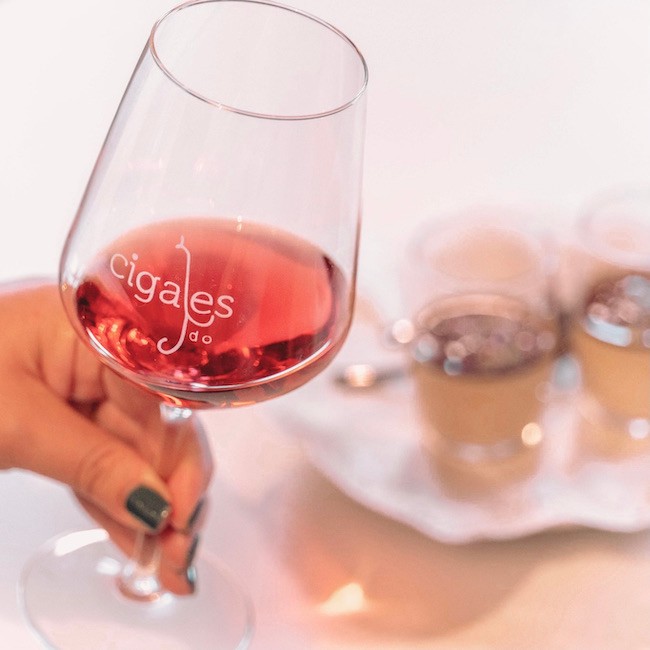If Toro is known for its red wines and Rueda for whites, their neighbour Cigales, stretched out for 30 km along the banks of the Pisuerga river, is beloved for the deep pink rosé called Clarete, made from a high proportion of Tempranillo or Garnacha with, historically, white varieties that grew in the same vineyards thrown in, too. These are substantial yet fresh wines, with flavours of assorted red berries and perfumes of white flowers and herbs; they make great matches for prawns, salmon or charcuterie and have real personality in line with their strong colour.
“We are a historic region with lots of old vines and family wineries,” explains Juan Principe, fourth generation of Bodega César Principe, and they have their own way of doing things: “our clarete is a mix of red and white grapes, pressed all together and co-fermented”. The region is fiercely hot in summer (that river is essential to the vines’ wellbeing) and cold, with a threat of frost, in winter, with vineyards of sand, limestone and marl over clay and loam: the sand in particular came in very useful when the dreaded louse phylloxera reached Spain and began destroying Rioja’s vines. Since the pest cannot live in sandy soils, some very old vines survived in Cigales and still thrive there. Bodega César Principe has vines between 25 and 30 years old that the owners call young. Their old vines range from 60 years old to 130 and maybe more.
Because royalty left town in 1606, when Philip III established the new capital as Madrid, Cigales did not try to keep up with commercial winemaking; by the 20th century the region had been forgotten by the wider world and its inhabitants were humbly cultivating their vines for the Valladolid bars and their own consumption, without interference – and without adulteration. Pesticides were hardly used: the harsh climate was its own problem but it did at least prevent disease, especially when combined with vines grown at considerable altitude: between 650 m and 800 m. A wide range of varieties were cultivated: Tempranillo and Garnacha, but also white Verdejo and Albillo. Every family had their own blend for their clarete – and their own winery. (They still do: “In my village of 1,000 people there are 100 wineries,” says Juan Principe, and the rules demand only that the majority grape in a clarete is at least 50% of the blend.) And the heat, the height and the cool nights ensured wines with elegance, structure and lovely acidity.
Meanwhile, the reputation of the surrounding DOs, particularly Ribera del Duero, was growing. So it was surely only a matter of time before someone had the idea of showing that Cigales too could make a red wine that would match those claretes for quality.
From rosé to red
That someone was Maria Pinchado, whose family has been making wine here for three generations. Working as an oenologist in Ribera del Duero, she met consultants Pepe Hidalgo and Ana Martín. “We became really close, personally and professionally,” says Pinchado, “and decided to embark on what was, at that time, a new adventure in the Cigales DO: to make a red wine in the land of rosé.” For Traslanzas, they chose a vineyard planted by María’s grandfather in 1945, that was, unusually for a region accustomed to field blends, planted almost entirely to Tempranillo. When that proved a success, they also turned their attention to rosé, both traditional and in a modern, paler style.
So now, Cigales is in a happy position. Not only do the region’s many winemakers have a proven specialty – and a pink one, just as rosé reaches undreamed-of heights of popularity – but they have also demonstrated that their terroir is ideal for red wines with ageing potential, as well. In 2000, Rioja’s Baron de Ley group, attracted by all those old vines, began building an impressive winery filled with art: Finca Museum now makes some of the best known, and highest priced, wines in the region. “We are very lucky to live in such a dynamic and inspiring place,” says Maria Pinchado, “one where the diversity of soils and the quality of the vines allow us to make a wide range of wines, each unique.” It has taken several hundred years for Cigales to start receiving the attention it deserves. But that’s all right: as those gnarled old vines, ancient bodegas dug out of the hillsides and delicious, long-ageing wines prove, this is a region that knows how to wait.
